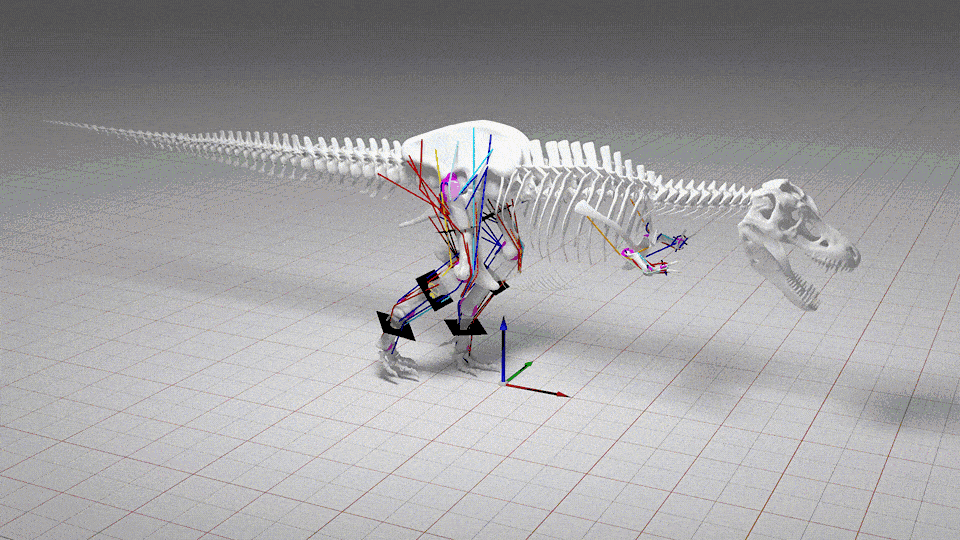When you purchase through links on our site , we may clear an affiliate commission . Here ’s how it work .
Despite honest-to-god , out - of - date drawings of long - neck dinosaur ram in swamps , scientists have long believed that dinosaur were a ground - jazz bunch : None were intend to swim . Now , though , a new after part fogy found in Morocco divulge that the acute - toothed and fearsomeSpinosaurus aegyptiacuswas the Michael Phelps of theCretaceous .
The predatorySpinosaurus , which could acquire up to 23 feet ( 7 m ) long , had a broad , boat paddle - like tail that carry more like the tails of today ’s crocodiles than that of other carnivorous dinosaur , researchers report today ( April 29 ) in the journalNature .

Two Spinosaurus hunt Onchopristis, a prehistoric sawfish, in the waters of the Kem Kem river system in what is now Morocco.
" This breakthrough is the nail in the coffin for the theme thatnon - avian dinosaursnever invaded the aquatic realm , " Nizar Ibrahim , a paleontologist at the University of Detroit Mercy and the lead generator of the new study , said in a financial statement . " This dinosaur was actively go after prey in the piddle column , not just standing in shallow waters waiting for Pisces the Fishes to swim by . "
tie in : Paleo - prowess : Dinosaurs hail to life in sensational illustrations
Swimming spinosaurids
Spinosaurus has always been a controversial creature . It was a theropod , or part of a group of mostly carnivorous dinosaurs that walk on two ramification ; and it was around the sizing of another theropod , Tyrannosaurus rex , with monumental projections of its vertebra hulk up to 5.4 feet ( 1.6 m ) above its back . Paleontologists think these projections probably support a hide - covered sail . Given its farseeing hooter and cone - influence teeth , which depend much like modern crocodile ' , paleontologist have long been confident thatSpinosaurusate fish , but most suspected that it compact along shorelines , hunting in shallow waters .
Ibrahim and his colleagues thoughtSpinosauruswas more than just a wader . In 2014 , the investigator write a newspaper in the journalSciencearguing that the dinosaur was adjust for a heavily aquatic life style . It had two-dimensional feet and nostrils high on its school principal , as well as dim castanets that would have allowed it to control its buoyancy while swimming , they wrote at the time . But , they wrote in the new Nature paper , this idea was dispute , particularly because there was no evidence to show howSpinosauruswould have propelled itself through water .
have-to doe with : image : grind up an aquatic dinosaur called Spinosaurus

Here, a large caudal, or “tail,” vertebra from the newfoundSpinosaurusfossils in Morocco.
A particular sticking item was the blank space on Spinosaurus ' skeleton where its quarter should have been . There is only one existing frame ofSpinosaurus aegyptiacusthat is mostly terminated , Ibrahim and his colleagues write . Other known skeletal system of the species were housed in Munich , Germany , during World War II andwere destroyed by bombings . The stay specimen was miss much of the fag end and vertebral sections .
New discovery
A new fogey , discovered in the Kem Kem beds of southeastern Morocco , alter all that . Ibrahim and his team excavate pearl making up about 80 % of the distance of the tail of a youngSpinosaurus .
And the tail seem nothing like that of other theropod carnivores . It was tall and flat , like a fivesome . To screen how the tail would have performed in the water system , the researchers created a plastic modelling of the tail and attached it to a robotic controller . They get that the buttocks generated eight times more thrust in the water than the tails of two other theropods — AllosaurusandCoelophysis , a small Triassic carnivore . It was also 2.6 clock time more effective in its movement than the stern of those two land - base dinosaurs . Instead , it behaved more like the tails of a modern crocodile or modern crest newt , two aquatic beast that can also move on land .
The finding landed with a splash in the paleontological residential district on Wednesday ( April 29 ) .

Researchers discovered theSpinosaurusfossils in the Kem Kem region of the Sahara Desert in southeastern Morocco.
" This tail , to me , look very aquatic , " Jason Poole , a fossilist and adjunct professor at Drexel University who was not involved in the research , told CNN .
But despite its swim prowess , Spinosaurusprobably did n’t stray too far from land , University of Edinburgh palaeontologist Steve Brusatte , who also was not involved in the report , told Gizmodo .
" No doubtSpinosauruswas an able swimmer in shallow waters , but its fossils are also find inland , so it plausibly was comfortable on land and in water system , " Brusatte tell .

Originally published onLive Science .
OFFER : Save 45 % on ' How It Works ' ' All About Space ' and ' All About account ' !
For a circumscribed time , you could take out a digital subscription to any ofour best - selling science magazinesfor just $ 2.38 per month , or 45 % off the stock price for the first three months .















